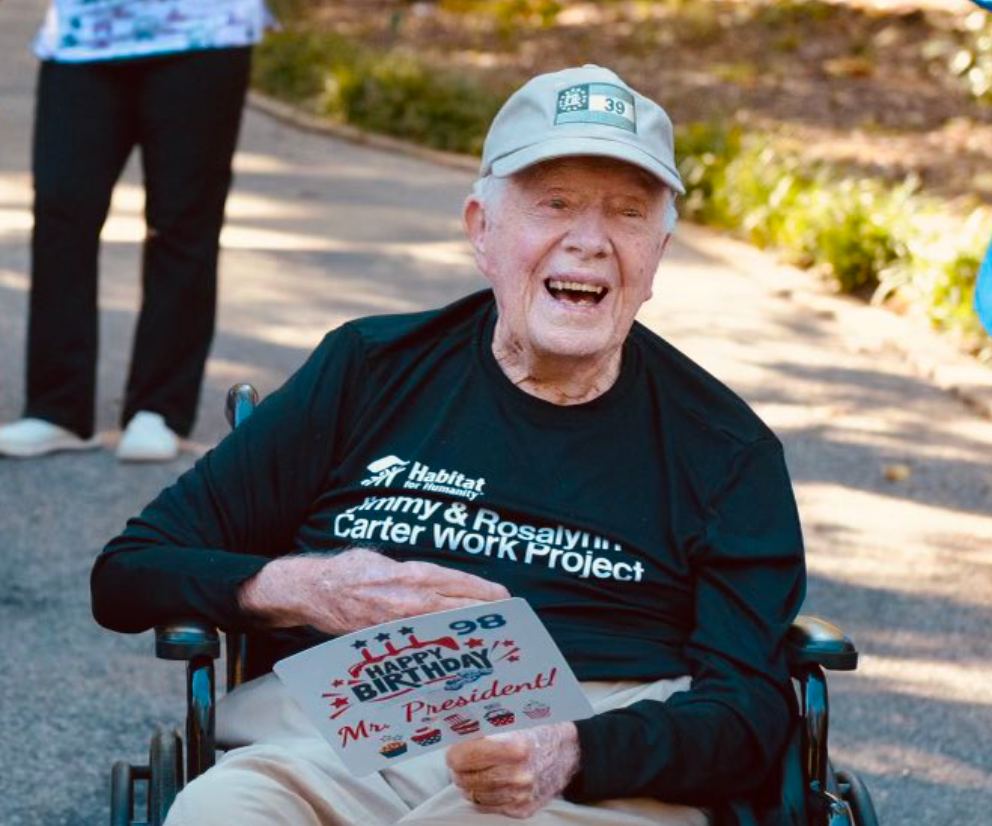Brenda Lee’s name may not be as recognizable as some of the other music stars from the 1960s but when you think of Christmas, you’ll know her song, and start humming her catchy tune, “Rockin’ Around the Christmas Tree.”
When Lee, now 78, first hit the stage, she wasn’t old enough to drive but her powerful vocals steered her “unprecedented international popularity” as the most successful female artist of the 1960s.
Lee, whose voice defied her diminutive stature at only 4 foot 9, became a fan favorite when she was only 12.
Brenda May Tarpley, born in 1944, got her start in the late 1940s, became huge in the 1950s, and over her career–that started before she left elementary school–she topped the charts 55 times, earning the title as the most successful female recording artist of the 1960s.
When Lee was only eight (according to Rolling Stone), her father, a construction worker, was killed at work and little Brenda–who then changed her last name to Lee–became the family’s primary provider.

Taking care of her younger brother, big sister, and mother–a cotton mill worker–was not a duty, but something she wanted to do. She said that she was thrilled when she made her first $20, so she could help her family: “Even at that young age, I saw that helped our life,” Lee said, adding “It put some food on the table. It helped, and I loved it.”
The Atlanta-born chanteuse, called a “pioneer of early rock and roll,” by the Georgia Encyclopedia, achieved “unprecedented international popularity in the 1960s.”
But, an incredibly humble human, Lee credits those who helped her achieve her dreams. When Christianity Today asked what she thinks about being a legend, Lee said “I don’t think of myself that way!” She continued, “I’m just a girl who’s been blessed to be doing what I’m doing, and there’s a lot of people who’ve sweated a lot of tears and put a lot of life’s work into me to be able to have my dream. So, if I’m a legend, then they’re legends, too.”
In 1956, the young girl joined country star Red Foley for a show at the Bell Auditorium near her home in Augusta, and she belted out “Jambalaya,” by Hank Williams.

She was then signed to appear on Foley’s Ozark Jubilee, a country music show, where millions of viewers fell in love with the sassy 12-year-old whose talent was developed well beyond her age.
In the same year, Lee signed with Decca Records, and the next year, she moved to Nashville, Tennessee, and fusing country with rhythm and blues–highlighted by her hiccupping vocals–she recorded early rockabilly classics like “BIGELOW 6-200,” “Little Jonah,” and “Let’s Jump the Broomstick.”
When asked if–when as a young girl–she was nervous performing in front of large crowds, she answered: “No, not really. Nobody ever told me to be nervous. The stage always felt like a hometown to me because I had been in front of people ever since I was 3 years old, singing to people. So it was a very comfortable spot for me.”
In 1957, Lee earned the nickname “Little Miss Dynamite” for her pint-sized powerhouse recording of the song “Dynamite,” and in 1958, fans heard “Rockin’ around the Christmas Tree,” a genre and generation-crossing holiday standard, released when she was only 13.
“I knew it was magical,” she told Rolling Stone.
Over the next couple of years, she charted with hits like “Sweet Nuthin’s,” “All Alone Am I,” and “Fool #1.”
Most of her songs, however, contradicted her experience as a young girl. Her mother didn’t let her date and she graduated high school not understanding the heartbreak of young love.

She was only 16 when she said “Love could be so cruel” in the song “I’m Sorry” and only 16 when she said “I want his lips to kiss me” in the song “I Want to be Wanted,” both back-to-back hits when she was still in school.
And when she turned 18, she met Ronnie Shacklett, whom she’s now been happily married to for 60 years.
Life on the road for Lee as a youngster had its difficulties. She celebrated her 12th birthday in Las Vegas and speaking with the Las Vegas Journal, Lee explained her loneliness.
“Of course, I wasn’t even allowed to walk through a casino, I was so young. So I didn’t even know what a casino looked like. They took me into the kitchen, then into the showroom. And then when my show was over, I was brought back out through the kitchen and back up to my room. Children weren’t allowed … in the casino area.” She continued, “There wasn’t anything to do in Vegas for a kid. The most fun I had was on the stage.”
Speaking on what she missed out on as a child, the award-winning Lee said, “Many times, I yearned to be with my friends rather than be out there on the road.”
Turns out she made new friends on the road, like with the music group that opened for her at a 1962 show in Germany. “I hung out with John,” she says effortlessly, speaking of John Lennon. “He was extremely intelligent, very acerbic with his jokes, just a gentle person. When I found out that they later said they were fans of my music, I was just floored.”

At 100 years old, Jimmy Carter is nearing the final chapter of his life, with loved ones by his side during this time.
On October 1, Jimmy Carter celebrated a major milestone, becoming the first U.S. president to reach 100 years old. While his family honored this remarkable moment, his grandson shared that Carter is now “very limited in what he can do,” reflecting on the final stages of his life’s journey.
Friends and family gathered in Plains, Georgia, Carter’s hometown, to celebrate his birthday, marking the first one without his wife Rosalynn. President Joe Biden sent a heartfelt message, acknowledging the bittersweet occasion, reminding Carter that even though Rosalynn passed away, she remains with him in spirit.

The milestone celebration took place at the home Carter and Rosalynn built in the 1960s, where Carter has been in hospice care. His grandson Jason shared that this home has always provided Carter with the most comfort and support, and there is no other place where he’d want to spend these final moments.
Jason also spoke about the difficulty his grandad has faced since Rosalynn’s death, after 77 years of marriage, noting that no one can fully understand what Carter is going through. He emphasized the importance of accepting that this stage of life is deeply spiritual and beyond full comprehension.

At the birthday celebration, Carter’s son Chip and other family members enjoyed cupcakes on the lawn while World War II planes flew overhead in honor of the former president. Chip mentioned that Carter is still engaged and intends to live long enough to vote in the upcoming election, showing his continued dedication to democracy.
Jason reflected on the significance of Carter’s 100 years, highlighting the immense good he’s done throughout his life. He also shared how the last 19 months, during which Carter has been in hospice, have been an opportunity for the family and the world to reflect on his legacy.

While physically limited and rarely leaving home, Carter remains emotionally engaged, still laughing and enjoying meaningful experiences in these final stages of his journey. Jason expressed that this time has been deeply significant for his grandfather, a unique chapter of life that can only be experienced at the very end.



Leave a Reply